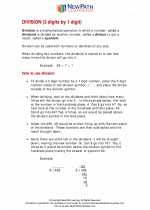Polyhedra
A polyhedron is a three-dimensional solid with flat faces and straight edges. The word "polyhedron" comes from the Greek roots "poly," meaning "many," and "hedra," meaning "faces." Polyhedra are classified based on the number of faces, edges, and vertices they have.
Types of Polyhedra
There are several types of polyhedra, including:
- Tetrahedron: A polyhedron with 4 faces, 6 edges, and 4 vertices.
- Hexahedron: Also known as a cube, it has 6 faces, 12 edges, and 8 vertices.
- Octahedron: It has 8 faces, 12 edges, and 6 vertices.
- Dodecahedron: This polyhedron has 12 faces, 30 edges, and 20 vertices.
- Icosahedron: It has 20 faces, 30 edges, and 12 vertices.
Euler's Formula
Euler's formula is a fundamental relationship between the number of faces (F), edges (E), and vertices (V) of a polyhedron. It is given by the formula:
F + V = E + 2
Surface Area and Volume
The surface area and volume of polyhedra can be calculated using specific formulas based on their shape. For example, the surface area of a cube is given by 6a^2, where "a" is the length of each side, and the volume is given by a^3.
Study Tips
When studying polyhedra, it's important to:
- Memorize the properties of different polyhedra, including the number of faces, edges, and vertices.
- Practice using Euler's formula to check the relationship between faces, edges, and vertices.
- Understand the surface area and volume formulas for different polyhedra.
- Work through practice problems to solidify your understanding of the concepts.
◂Math Worksheets and Study Guides Sixth Grade. Division

 Worksheet/Answer key
Worksheet/Answer key
 Worksheet/Answer key
Worksheet/Answer key
 Worksheet/Answer key
Worksheet/Answer key
